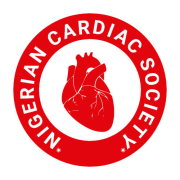

Author(s): Fatima A, Iqbal F, Akbar A, Aziz M, Mirani ZA and Sheikh AS
Introduction: Myocardial infarction (MI) is 3rd leading disorder with worldwide prevalence. Males have more death risk because of hypoxia to cardiac myocytes due to thrombus formation resulted from cholesterol or fatty acid deposition. This blockage induces blood flow interruption causing atherosclerosis and embolism. Dysregulation in triglycerides, cholesterol and fatty acid increases the risk for MI in these individuals.
Materials and methods: A study was designed with real time (rt) mRNA measurement (RT-PCR) using LUX™ primer for Apolipoprotein E, Apolipoprotein C III and ACE II genes/products. Study looks for uncontrollable factors - sex, age and family history and controllable factors - Body Mass Index (BMI), BSF, Diabetes, duration of diabetes, physical activity, hypertension, blood pressure, smoking, education level, socioeconomic status, dyslipidaemia, sleeping/ awaking habit, consumption of fruit, use of vegetables and consumption of meat, number of tea/coffee cups, were looked at.
Results: Results indicates that long duration of diabetes (p=0.005) diabetes mellitus (p=0.042), and consumption of meat (chicken) (p=0.032) pose significant association MI and the genes. Apolipoprotein E has shown to effect myocardial infracted male patients in age group 23-33 years, Body Mass Index (BMI) (>16 kg/m2), diabetes mellitus, creatinine (170-190 mmol/L), systolic blood pressure (90-120 mmHg), low levels of triglyceride can be independently assistant to MI. In the study pan /naswar show high statistical significance with previous heart attack (p=0.001) and sleeping /awaking time (p=0.001) pattern.
Conclusion: In nutshell, duration diabetes, quantities of triglyceride, age, systolic blood pressure and interestingly sleeping/awaking time may be of great importance to draw a mathematical model.